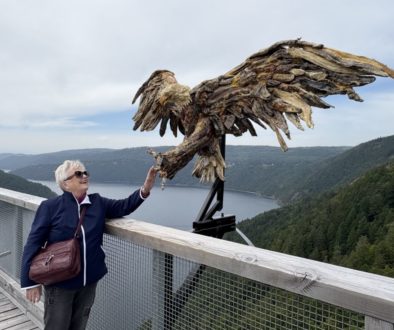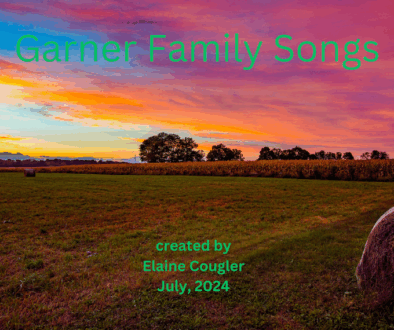Biography is My Marathon of Hope

Here are some points that might both explain how I’m writing the biography of Ron Calhoun (Behind the Marathon of Hope: How Ron Calhoun Helped Terry Fox Raise Millions for Cancer) and give some guidance to others contemplating writing a biography themselves.
This book is about a living person rather than an iconic figure from the past which fact presents me with a huge advantage. I have been able to get the story directly from the star’s mouth; in fact, I’ve been interviewing Ron over the course of the last year, sneaking out time whenever our busy schedules have permitted. We’ve talked about Terry Fox, the most famous of those Ron has assisted; John and Jesse Davidson of Jesse’s Journey; Steve Fonyo, a Cancer survivor whose run presented huge challenges; and blind Ken McColm who ran across Canada to aid Diabetes research.

Either at my home or his I set up the tiny recorder and push record. Ron and I have about a two-hour discussion as he explains documents in front of us, tells stories from the past and answers my questions along the way. I have a sheet of topics and questions for him to explain and that leads to many interesting conversations. I’ve discovered that my interviewing style is more like a conversation where I even share salient points from my history which fit in with what he’s saying. Ron first worked with my mother in the Cancer Society and our families have a long history, making this conversational style most appropriate.
The question I am having to ask myself is whether to use or how to use all the information Ron gives me. Ron has many unique documents some of which I’ll put into an appendix at the back of the book but I’ll try to keep the narrative of Ron’s life a flowing story. Footnotes are useful here as well.
I like the third suggestion in the following very simple list from the web particularly as these questions start my own brain thinking about what might be good for my particular project.
To write a biography you should: (Click link for more information.)
- Select a person you are interested in.
- Find out the basic facts of the person’s life. Start with the encyclopedia and almanac.
- Think about what else you would like to know about the person, and what parts of the life you want to write most about. Some questions you might want to think about include:
- What makes this person special or interesting?
- What kind of effect did he or she have on the world? other people?
- What are the adjectives you would most use to describe the person?
- What examples from their life illustrate those qualities?
- What events shaped or changed this person’s life?
- Did he or she overcome obstacles? Take risks? Get lucky?
- Would the world be better or worse if this person hadn’t lived? How and why?
- Do additional research at your library or on the Internet to find information that helps you answer these questions and tell an interesting story.
- Write your biography.
One of the surprises I’ve had is the amount and the variety of information available to me for this project. Just now I’ve had to resort to putting everything into the chapters as I’ve laid them out in my chapter list at the beginning of the book and not worrying too much about writing perfectly integrated information. That narrative quality will be more important in editing but just now I really want to see the shape of the story. I need to get control of the process and this is how I’ve chosen to do it.
I have sixteen chapters and am planning a prologue. Some of the chapters are very long, some short, and others almost empty as I haven’t got to them. Once I organize the information in this way, I’ll revamp the whole thing with a view to evening out the chapters, making sure I end each one so the reader will have to turn the page, and giving the book a rising action quality, as much as is possible with a biography.
This book is a different kind of history for me, whose historical fiction books started my writing career. There I could use the actual historical facts as a framework upon which I imposed the fiction part. A lot of the book came out of my imagination. I’m pretty sure Ron Calhoun, his family, friends and the rest of the world actually want me to make this whole book factual, so my approach to it has to be quite different.
I’ve contemplated using sidebar boxes with related information but have decided to go the appendix route. That will give the biography a narrative quality. I’m telling a story. Yes, it’s a real person’s story but it’s a story and I want it to read like one and not like a list of facts. With Calhoun’s exceptional stories this format is working well. The appendices will be substantial with Ron’s documents. Pictures will be included as well.
Another narrative quality here is my use of direct quotations, possible because my subject, though eighty-four and having outlived every other person on that Cancer Society team back in 1980, is still very much alive. Ron was the chair of that committee. He gets to tell the story. A weird thing that has been happening as I write the story is that I often find myself using Ron’s own phraseology. He’s a wordsmith himself. That means I can hear his voice in the writing making this a biography that is almost alive with his very personality. That may diminish somewhat in revisions but I hope to retain that flavor.

Now if you happen to be American and are not quite so conversant with Terry Fox’s name I must tell you that Ron Calhoun is related to a Vice President which John F. Kennedy included in his list of five most important vice presidents of the United States: John C. Calhoun. Like John C., Ron can trace his Calhoun lineage back to the twelve hundreds. And Ron even engineered help from a local historical society in Charleston, South Carolina, to get his famous ancestor’s gravestone repaired. The man takes on any cause he possibly can!
The last point necessary to address today is the question of what to do with all the information you find about your biography subject that doesn’t make it into the book. I have two thoughts. Come up with a guideline for choosing what will make it into the book, either in the main biography or in the appendix. Then take those items which are just too far away from the main topic of the book and use them for marketing tidbits, blog posts, Twitter bits, Facebook articles, or any other similar venues. They can lead nicely into your main subject matter for a speaking engagement. They might link your subject matter to a newspaper article. Do not simply discard any of the research you’ve done.
My deadline for completing this rough draft is the end of August. Then I’m setting it aside for a month and living my life outside of writing. When I get back to it, I’ll be looking at the whole project with fresh eyes and the revisions will begin. Publication is sometime in mid 2019. Meanwhile, here are my beloved historical novels to tide you over.
Click on the Loyalist Trilogy books below for great historical stories with satisfying endings:





![Kathy riding Lexie (2[8] copy Kathy riding Lexie (2[8] copy](https://elainecougler.com/wp-content/uploads/2025/02/Kathy-riding-Lexie-28-copy-394x330.jpg)
June 14, 2018 @ 10:11 am
Excellent Elaine! We are so grateful for your dedication to this project and your friendship.
June 14, 2018 @ 10:34 am
Lori, I am so privileged to be doing this! And you have been a huge help. I’m very excited that the rough draft is coming along so well. What a rewarding project! See you on the 24th!
June 14, 2018 @ 1:41 pm
looking forward to reading
June 14, 2018 @ 1:43 pm
looking forward to the read
June 14, 2018 @ 1:44 pm
looking forward to reading Ron’s story
June 14, 2018 @ 4:30 pm
Hi Bill!
I feel like I know you after interviewing Ron. Thanks for your comments. I think I should have only posted one. Did you have trouble?
June 15, 2018 @ 12:57 pm
As a fellow author with a huge amount of historical information for my book, “Different Strokes”, I have faced many of the same questions that you have, Elaine. It is comforting to know that you have faced some of the same dilemmas as I have and that there are answers.
June 15, 2018 @ 2:42 pm
Thanks for visiting, Janet! Different Strokes is such a great title!
June 16, 2020 @ 12:12 pm
As a long time Run Organizer involved with the Terry Fox Runs in Canada and the USA, I just finished reading your book. Thanks so much for putting Ron Calhoun’s life story in your book. I regret I never met Ron Calhoun. He was certainly a very remarkable man.
June 16, 2020 @ 12:38 pm
Thanks, Doug, for your kind comments. Ron Calhoun certainly did his part to make our world a better place. He had a way of bringing the best out of people and I miss him very much. I am very glad that he lived long enough to see the book, to be at the book launches and to bask in a bit of the glory he so richly deserved. I met many people along this journey who, like you, work tirelessly every year to continue Terry’s Marathon of Hope. Terry is certainly another Canadian hero.